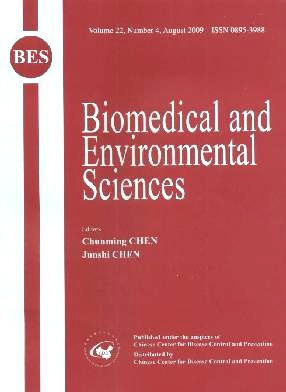Telomerase Activity and Telomerase Reverse Transcriptase Expression Induced by Selenium in Rat Hepatocytes
-
Key words:
- Selenium /
- Telomerase /
- Telomerase reverse transcriptase /
- c-myc /
- p53
Abstract: Objectives To investigate the effects of sodium selenite on telomerase activity, apoptosis and expression of TERT, c-myc and p53 in rat hepatocytes. Methods Selenium at doses of 2.5, 5.0, and 10μmol/kg was given to SD rats by garage. In rat hepatocytes, telomerase activity was measured by the telomeric repeat amplification protocol (TRAP), apoptosis was detected by flow cytometry, and expressions of telomerase reverse transcriptase (TERT), c-myc and p53 were analyzed by reverse transcription-polymerase chain reaction (RT-PCR).c-Myc and P53 proteins were detected by immunochemistry. Results Selenium at doses of 2.5, 5.0, and 10μmol/kg significantly increased hepatocellular telomerase activity and induced apoptosis in a close-dependent manner. Although selenium at doses of 2.5, 5.0, and 10μmol/kg displayed no obvious enhancing effect on the TERT mRNA expression in rat hepatocytes (P>0.05), it significantly increased the c-myc mRNA and p53 mRNA expression at the dose of 10μmol/kg (p<0.05). Selenium at doses of 5.0 and 10μmol/kg obviously increased the content of P53 protein in rat hepatocytes, but only at the dose of 10μmol/kg, it significantly promoted the value of c-Myc protein in them. Conclusion Selenium can slightly increase telomerase activity and TERT expression, and significantly induce apoptosis and over-expression of c-myc and p53 at relatively high doses. The beneficial effects of selenium on senescence and aging may be mediated by telomerase activation and expression of TERT, c-myc, and p53 in rat hepatocytes.
| Citation: | RI-AN YU, HUA-JIE CHEN, LING-FEI HE, BING CHEN, XUE-MIN CHEN. Telomerase Activity and Telomerase Reverse Transcriptase Expression Induced by Selenium in Rat Hepatocytes[J]. Biomedical and Environmental Sciences, 2009, 22(4): 311-317. |







 Quick Links
Quick Links
 DownLoad:
DownLoad: